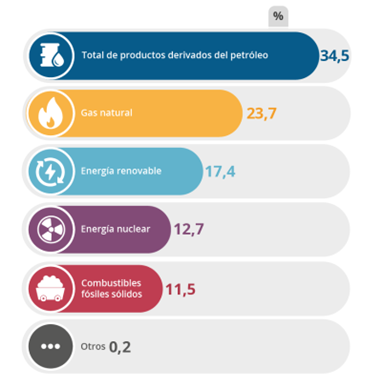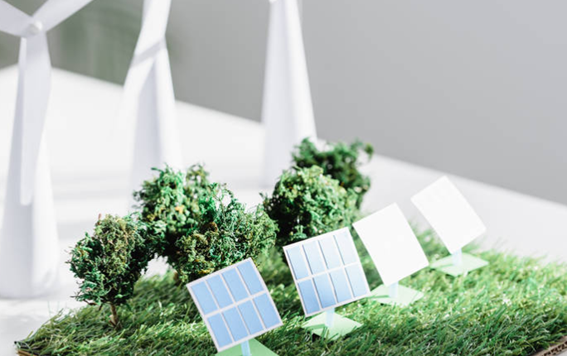2023 was the most renewable year in Spain’s history, recording an all-time high of over 135,000 GWh. The current situation of renewable energies in Spain continues to improve, with special emphasis on wind and photovoltaic energy.
In 2018, the European Union adopted Directive 2018/2001 to promote the use of renewable energies, with the aim of reducing greenhouse gas emissions and increasing the share of renewable energies and energy efficiency by 2030. These targets are in line with the European Green Pact, which aims for a net emission reduction of at least 55% by 2030 and to achieve climate neutrality by 2050.
The REPowerEU plan, as part of this initiative, proposes to increase the renewable energy target to 45% by 2030 and to improve energy savings from 9% to 13%. This plan also underlines the need to move away from fossil fuels, especially in the wake of Russia’s invasion of Ukraine, to ensure energy security.
Current situation of Renewable Energies in Spain
Spain has shown a high energy dependence on fossil fuels, reaching an all-time high of 81.3% in 2008. Although this figure has decreased, energy dependency is still high at 73.4% in 2018, almost twenty points above the European average. Since 2018, there has been a significant shift towards renewables. According to the 2018 Environmental Profile of Spain (EAP), energy from renewable sources increased by 18.6% over the previous year, accounting for 38.4% of the country’s electricity.
To support the growth of renewable energies, the Council of Ministers, at the proposal of the Ministry for Ecological Transition, approved Royal Decree 17/2019. This decree includes measures to adapt the electricity system and facilitate the closure of thermal power plants, promoting an emission-neutral energy system by 2030.
Urgent measures include:
- Granting of access to the grid: Regulation of procedures and requirements that take into account social and environmental criteria.
- Concession for the use of water associated with closed power plants: Grant new concessions for the use of this water with social and environmental criteria.
In 2021, renewables produced 46.6% of electricity in Spain, surpassing nuclear power and natural gas combined. 2023 marked a turning point with a record 50.8% share of the national electricity mix, compared to 42.2% in 2022. Wind and solar PV are the main contributors to this increase.
Europe’s energy mix today
Europe is moving towards a more sustainable energy era with a lower carbon footprint. During 2020, the European Union made significant progress in meeting its initial three climate and energy targets: reducing greenhouse gas emissions by 20% compared to 1990 levels, increase the use of renewable energies to 20% compared to 1990 levels, increase the use of renewable energies to 20% compared to 1990 levels, increase the use of renewable energies to 20% of the total and to increase energy efficiency also by 20%.
According to the latest aggregate data, since 2020, the total energy available in the EU comes mainly from five different sources: petroleum products, including crude oil (around 35%); natural gas (24%); renewable energies (17%); nuclear energy (13%) and solid fossil fuels, such as coal (12%).
However, there are significant differences between EU Member States. For example, petroleum products accounted for more than 85% of total available energy in Cyprus and Malta in 2020. Natural gas accounted for 40% of total available energy in Italy, nuclear energy 41% in France and renewables almost half of total energy in Sweden.
A country’s energy mix is shaped by several factors, such as the availability of domestic resources, such as forests and other biomass, and rivers, or a good potential for wind or solar energy. Decisions made in the past lock countries into the use of certain technologies over many decades, and connectivity to large energy grids, as well as relations with neighbouring countries, affect the options available for exports and imports.
EU energy mix:

Source: Eurostat
At Laragon, we have a long history of providing our clients with the best digital solutions to manage their climate action plans and their measurement, as well as the impact generated by their achievement. Using the latest technology, we enable these companies to improve their transparency commitments to their stakeholders and to be part of the highest sustainability standards.



